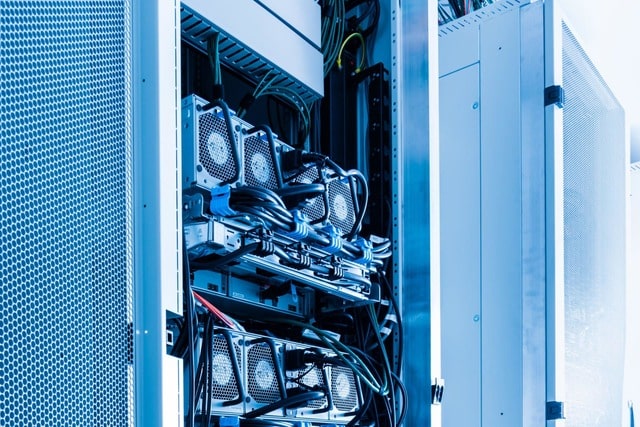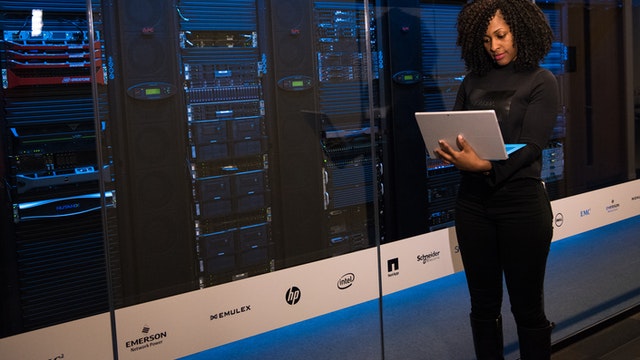How a Data Center UPS Can Improve Efficiency and Reduce Downtime
Power outages can be costly for a data center. Data centers require UPS systems to minimize data loss and downtime during a power outage. An online double-conversion UPS system is typically used in critical data centers. This UPS system converts incoming electricity from AC to DC, charges the energy storage system and passes the current to the IT load.
Improved Efficiency
Data centers need power-quality protection to safeguard IT equipment from voltage fluctuations and harmonic distortion. A UPS system that incorporates an automatic transfer switch (ATS) enables the seamless transition to a stable secondary power source without disrupting critical operations or causing data loss. When selecting a data center UPS, look for an efficiency rating of at least 90 percent to maximize uptime. This metric indicates how much of the original incoming power is used to support your IT load versus the amount lost to operate the UPS. Also, consider a UPS that includes RJ11, RJ45 and coaxial receptacles to protect the connected phone, network or cable lines from surges during a power outage. This feature can extend the life of your data line equipment. It may be necessary if your facility has an end-client contract with a colocation provider that requires backup power for critical IT loads. Most modern UPS systems have an online/double conversion topology that utilizes power electronics to enable continuous flow through a rectifier and energy storage system. They only switch to a battery backup when the IT load exceeds a threshold. This is an important feature because it provides a window of time to start backup generators or complete other emergency power mitigation steps. UPS redundancy is another key consideration for data centers, with options ranging from N+1 to 2N.
Increased Security
A UPS system protects against surges on the connected telephone, network and coaxial connections. These surges can damage or destroy data center equipment and cause costly downtime. UPS systems help protect against these surges by absorbing the excess energy and providing a smoother, stable output of uninterrupted power to attached devices. A key feature of a data center UPS is its ability to provide battery backup power for an extended period during an outage or failure. This extends the time monitoring software can shut down servers and storage devices before the batteries run out, minimizing potential data loss or corruption. Moreover, UPS systems enable data centers to bridge the gap between primary and backup generator activation, allowing the data center to remain operational until all critical processes can be transitioned to the generator.
When choosing a UPS, it is important to consider the data center’s overall power requirements and design goals. Some businesses require more runtime, which can necessitate a larger battery bank and higher operating costs. Others may want to minimize space requirements, which can be achieved by opting for a freestanding form factor rather than rack-mounted models. Additionally, users should ask their UPS providers to show them efficiency curves, which can help them determine the best solution for their facilities and applications.
Reduced Downtime
Datacenter UPS systems provide critical backup power that bridges the short gap between utility power failure and when backup generators kick in. They also protect equipment from surges, sags and noise interference that can damage connected devices or reduce lifespan. To ensure maximum uptime, a data center must take several steps to maximize its UPS system’s efficiency. First, it must calculate the correct capacity of the UPS system. This requires conducting a load analysis considering all connected equipment’s electrical requirements. This can be done using an online (no load test) or offline power consumption calculator from many UPS manufacturers.
Another key factor is minimizing unnecessary battery cycling. This is caused by over-discharging and recharging batteries too often and leaving them in storage for long periods without recharging. This can lead to premature battery failure and reduced uptime. Finally, it’s important to periodically test and inspect the UPS system to identify potential issues that could cause an outage. UPS maintenance and inspection checklists are available from many UPS vendors to help with these tasks. Creating and following these maintenance schedules can help prevent the most common causes of UPS system failure, including human error. By implementing and sticking to a UPS maintenance schedule, businesses can dramatically reduce their risk of downtime.
Increased Reliability
Studies have shown that UPS failure is the primary cause of power-related outages in data centers. Keeping your UPS up to date is the easiest way to avoid that problem. In addition to physical inspections, a centralized UPS management platform can help maintain your entire fleet of UPS systems. This platform collects information about each UPS, including battery status and performance. This allows administrators to remotely monitor the performance of each device and quickly identify a potential failure, saving valuable time. Another factor that improves data center reliability is selecting a UPS solution with the smallest footprint possible without sacrificing protection. Choosing a UPS that is just 1% more efficient than your current model can save you huge amounts of energy in the long run. More efficient UPS solutions also give off less heat, reducing cooling requirements and operating costs. Many data centers rely on an N+1 UPS architecture to ensure multiple units can handle the maximum IT load. The benefit is that the system can be more precisely right-sized to match actual power demand, which results in greater efficiency. The downside is that the larger battery runtime of a N+1 solution can increase capital and maintenance costs. This can be offset by choosing a UPS with modular, slot-in power modules that allow for gradual expansion, reducing the overall cost.




